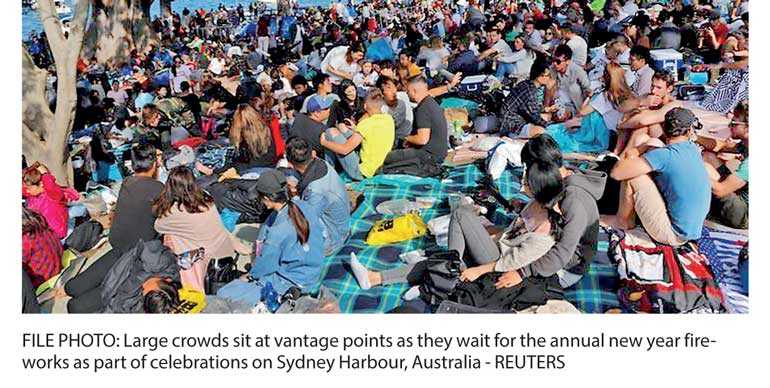Sunday Mar 09, 2025
Sunday Mar 09, 2025
Wednesday, 8 August 2018 00:00 - - {{hitsCtrl.values.hits}}
 SYDNEY (Reuters): Australia’s population will hit a record 25 million on Tuesday, almost a decade earlier than projected, as it attracts hundreds of thousands of migrants each year, latest government data shows.
SYDNEY (Reuters): Australia’s population will hit a record 25 million on Tuesday, almost a decade earlier than projected, as it attracts hundreds of thousands of migrants each year, latest government data shows.
Every minute, one person arrives to live in Australia, the data shows, underpinning demand for everything from homes to cars, schools and hospitals, and boosting the country’s economic fortunes.
The Australian Bureau of Statistics estimates the country’s population will reach 26 million in three years’ time, based on current trends.
The rapid increase in migrant numbers has sparked a debate on the economic and social impact of migration given inadequate infrastructure has resulted in clogged cities while an expanding labour market has capped wage growth.
“Coping means continuing to invest in infrastructure,” Treasurer Scott Morrison said on 3AW Radio on Tuesday, when asked if Australia can cope with 25 million people.
“That’s why we’ve got a A$ 75 billion infrastructure plan. There has to be to support that growth that we’re seeing in our population.”
Australia’s economic success is built on migration with more than a third of the population born overseas, according to the latest census data which shows England, China, New Zealand and India as the top countries where migrants come from.
A separate ABS study released in June shows net overseas migration now accounts for 62% of total population growth. Natural increase makes up 38%.
But immigration has become a political hot potato as the ruling centre-right coalition government and the opposition Labor party start campaigning for the New South Wales state election due next March followed by national elections in May.
Far right politician Pauline Hanson has blamed the rising migrant numbers for growing inequality in Australia, while Senator Dean Smith became the first member of the government earlier this year to call for a review into population growth.
Smith has argued the rapid intake has put a huge strain on the infrastructure of the country’s largest cities - Sydney and Melbourne - home to the vast majority of newcomers.
“The 25 million milestone is a perfect opportunity to engage in a broad public discussion about what future population growth should look like for Australia and how that can be balanced with preserving high living standards and quality of life,” Smith told Reuters.
Discover Kapruka, the leading online shopping platform in Sri Lanka, where you can conveniently send Gifts and Flowers to your loved ones for any event including Valentine ’s Day. Explore a wide range of popular Shopping Categories on Kapruka, including Toys, Groceries, Electronics, Birthday Cakes, Fruits, Chocolates, Flower Bouquets, Clothing, Watches, Lingerie, Gift Sets and Jewellery. Also if you’re interested in selling with Kapruka, Partner Central by Kapruka is the best solution to start with. Moreover, through Kapruka Global Shop, you can also enjoy the convenience of purchasing products from renowned platforms like Amazon and eBay and have them delivered to Sri Lanka.
Discover Kapruka, the leading online shopping platform in Sri Lanka, where you can conveniently send Gifts and Flowers to your loved ones for any event including Valentine ’s Day. Explore a wide range of popular Shopping Categories on Kapruka, including Toys, Groceries, Electronics, Birthday Cakes, Fruits, Chocolates, Flower Bouquets, Clothing, Watches, Lingerie, Gift Sets and Jewellery. Also if you’re interested in selling with Kapruka, Partner Central by Kapruka is the best solution to start with. Moreover, through Kapruka Global Shop, you can also enjoy the convenience of purchasing products from renowned platforms like Amazon and eBay and have them delivered to Sri Lanka.